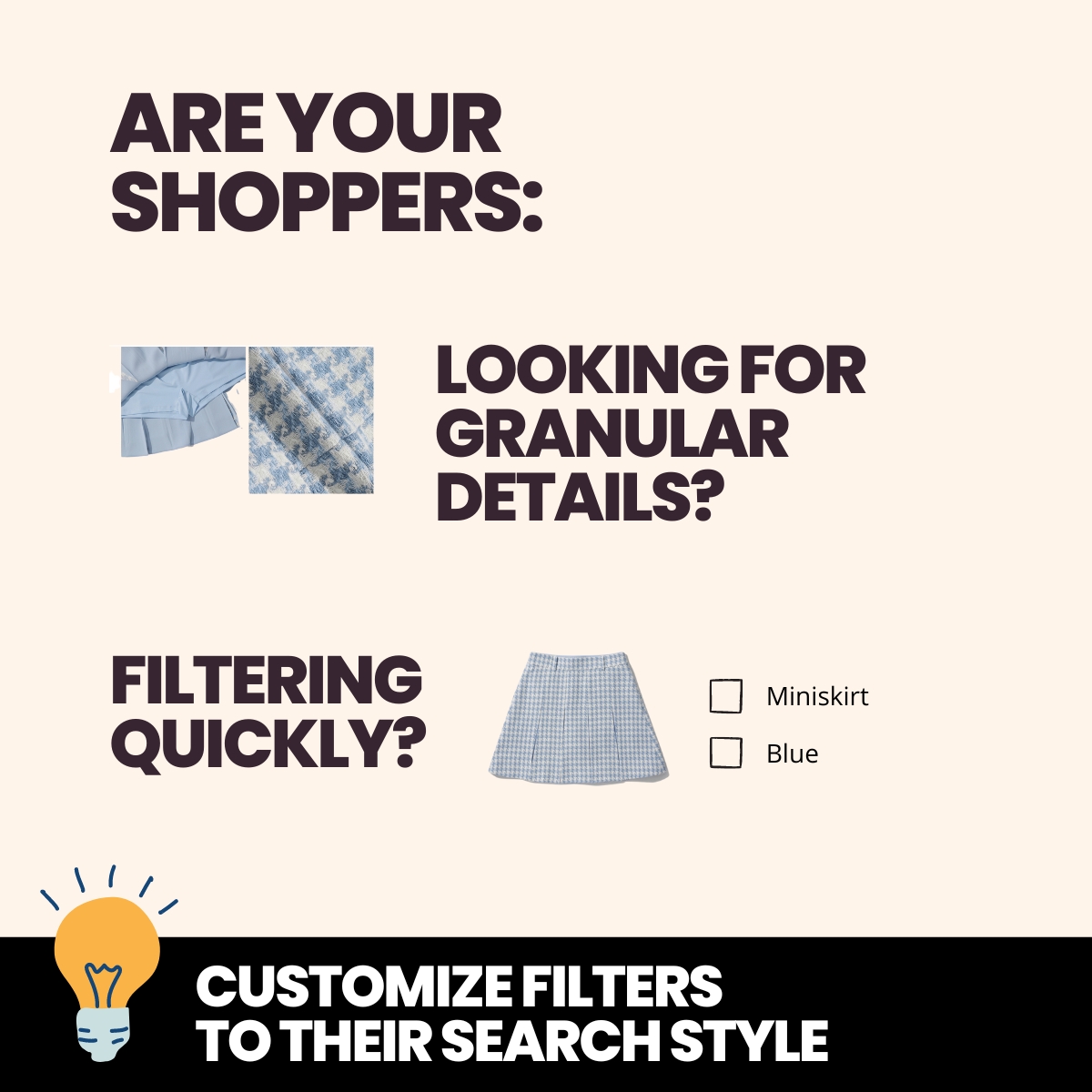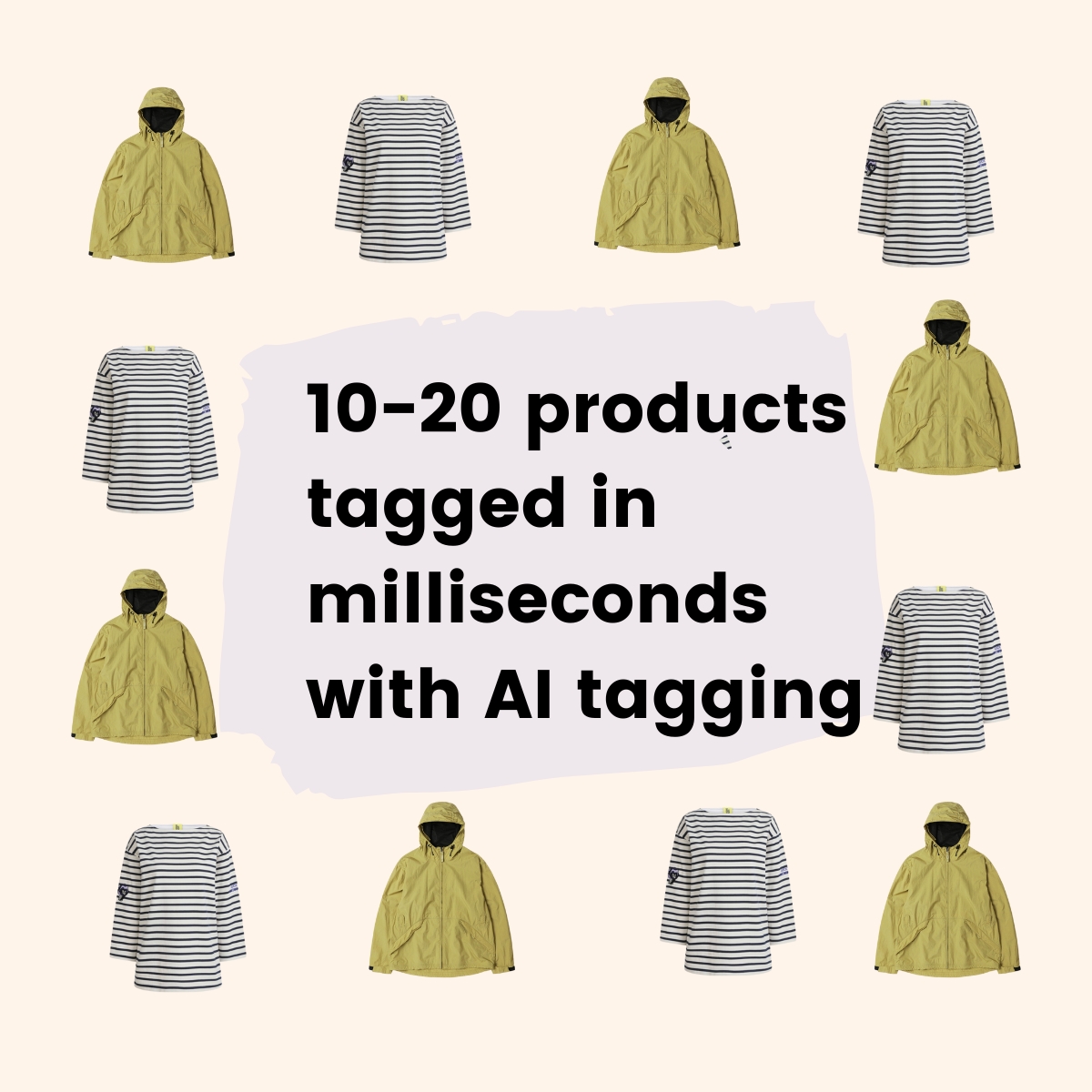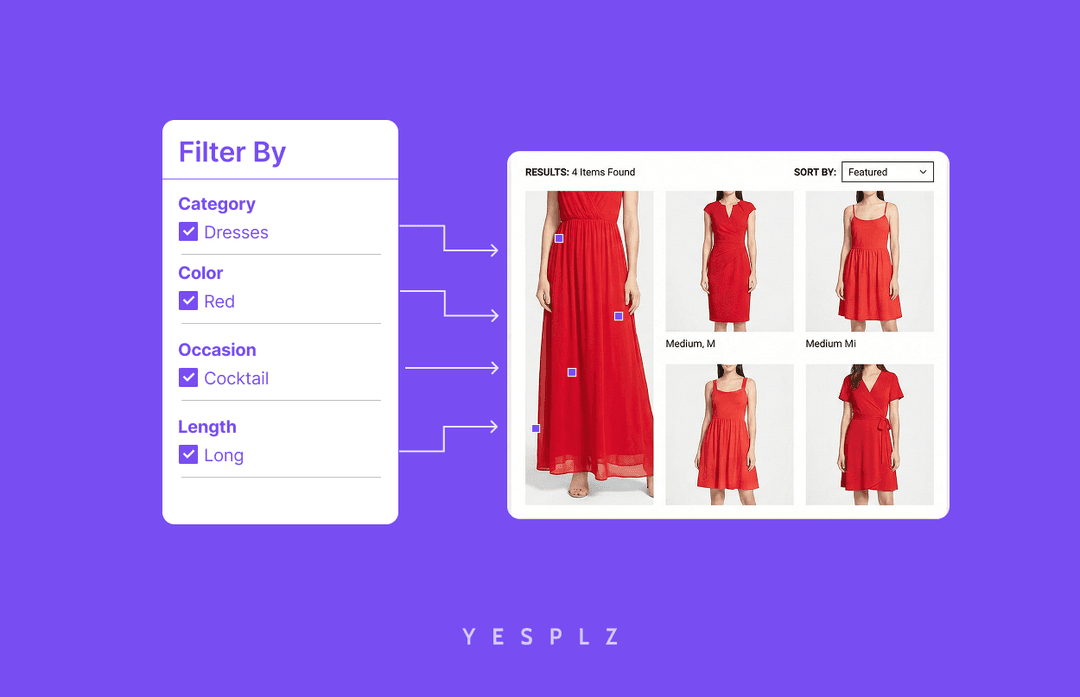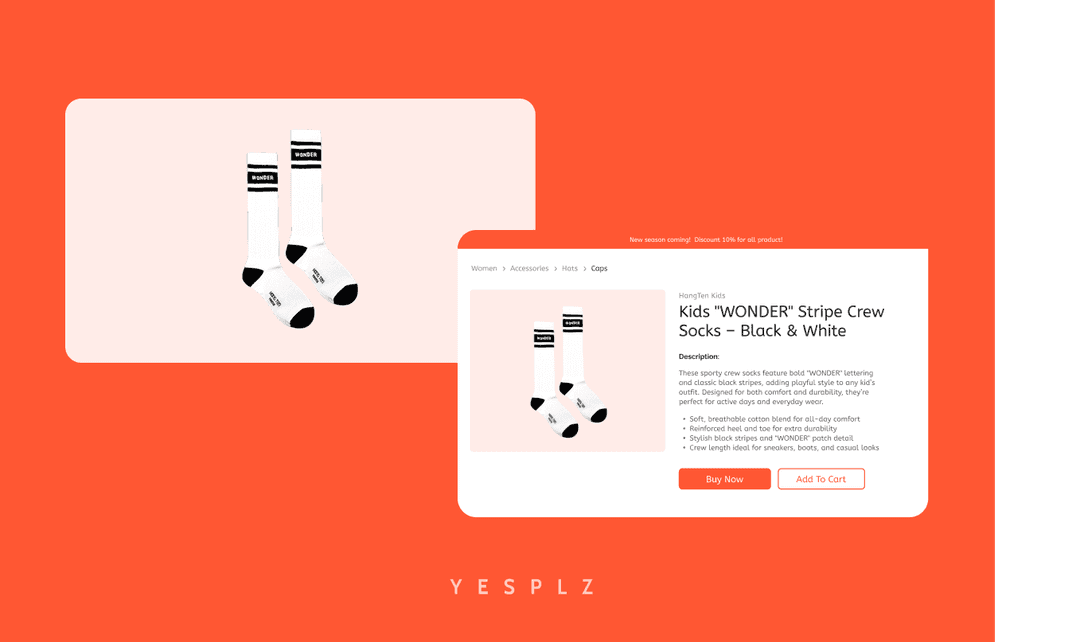Tips from YesPlz AI
by YesPlz.AIMarch 2023

Less than 1 in 5 eCommerce websites provide a “good filtering” experience, according to a study by Baymard Institute.
You’ve likely experienced a poor filter & search experience. Think back to the last time you saw repeated product filters, missing products, difficult to navigate filters, and confusing filters.

At the core of the filtering experience is the ability to customize. When shoppers can customize their searches by their preferred product attributes, they can find what they’re looking for quickly and easily.
In this article, we’ll outline the 5 essential steps to customizing the product filter & search experience–so your eCommerce can be in the minority of “good filtering” experiences.
Before customizing your filter experience, it's important to understand how your shoppers search for products and use your website. Analyze customer behavior by tracking their clicks, searches, and purchases.
Each customer who visits your eCommerce website has their own unique search intent, which can be categorized into different "search personas".
According to Baymard, there are four key search intentions: Exact, Product, Feature, and Thematic.
Exact: A search with a specific goal in mind
Product: Product category, but not necessarily a specific brand
Feature: Focused on a special feature or detail
Thematic: A special occasion or season
Most importantly–is your shopper sophisticated, looking for granular details of product information, like material and silhouette. Or, is she simply looking for quick ways to filter down searches?
Each of these search intentions and shopper profiles requires different search options.
By understanding your shoppers, you can provide the search that they want to use accordingly.

Does this sound like a lot of manual work?
With AI-powered filtering, retailers can automatically update filters and text search with popular, trending keywords, without needing to manually configure them.
Product filter & search options for fashion eCommerce are varied, and can include:
Category
Design features: neckline, sleeve, length
Silhouette
Pattern
Color
Size
Brands
Shipping options
Material
Thematic: mood, vibe, or occasion
Feeling overwhelmed from this list? So are shoppers.
The key is to find a balance between having too few filters, which can inhibit shoppers from finding what they’re looking for, and having too many filters, which can be difficult to navigate.
As we mentioned above, understand your shoppers and prioritize the most important filters to create the best possible product filter & search experience.
When using YesPlz AI filters, we’ve already done the customer research for you–we conducted hundreds of interviews to determine the most important product attributes to shoppers, then optimized our smart product filters based on our findings
After determining the most important filters, make sure to feature them front-and-center (or at the top of the navigation) so shoppers can easily find them.
One of the most powerful tools for customizing the filter experience is AI tagging. By using machine learning algorithms to automatically tag products with relevant product attributes, you can create customized filter options.
For example, AI tagging identifies style and design product attributes, and occasion and theme. A “black dress” could easily be categorized as a “going-out dress” or “work dress”--which would be a much more laborious task for humans.

By harnessing the power of YesPlz AI tagging, retailers can tag 10-20 products in milliseconds, creating an opportunity for retailers to customize their filters easily and automatically.
Don't limit customers to only one filter at a time.
Allow them to filter by multiple attributes simultaneously, such as size and color. This can help them narrow down their search even further and find exactly what they're looking for, putting the shopper in control of the experience.
And, don’t forget about customizing filters for mobile–in 2023, mobile navigation is higher than ever, and the same desktop UI simply doesn’t translate to smaller screens. Being strategic about which filters to use is particularly important on mobile, where it’s impossible to show every filter.
Finally, test and refine your filter experience regularly. Use A/B testing to try out different filter options and see what resonates with shoppers.
If A/B testing is not handy, you can measure with a simple Google Analytics to see which filtering option has the most clicks and needs to be refined further. At YesPlz AI, we are constantly surprised to see the different filtering options favored in different retail stores.
Pay attention to customer feedback and make adjustments accordingly. The filter experience is an ongoing process that requires constant attention and refinement to stay relevant and effective.
Customizing the product filter & search experience is a key element of the customer experience in fashion eCommerce. With a well-designed, customized filter experience, you can increase customer satisfaction and drive more conversions.
Schedule a meeting to see how your product filter & search is performing, and see what can be further improved.

Written by YesPlz.AI
We build the next gen visual search & recommendation for online fashion retailers

Stop losing sales to poor product filtering. Discover how AI simplifies creating Shopify filters, saving you 25-50 hours per 100 products.
by YesPlz.AI

Automate Shopify product pages and cut 50–100 hours of manual work. AI generates product titles, descriptions, and metadata instantly from product images.
by YesPlz.AI